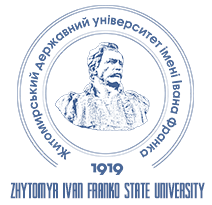BUILDING A CONNECTION BETWEEN INDIVIDUAL TRAINING OPPORTUNITIES DURING EDUCATION AT HIGH SCHOOL FOR ATHLETES OF THE NATIONAL TABLE TENNIS TEAM
DOI:
https://doi.org/10.35433/pedagogy.2(109).2022.221-230Keywords:
pedagogical principles, table tennis, cardiovascular system, 2functional state, long-term training, sportsmanship, individual capabilitiesAbstract
Sports training is a process of sports improvement, guided by scientific and especially pedagogical principles, the purpose of which is to bring the athlete to high and record-breaking results in this sport through a planned and systematic effect on the capabilities and preparedness of the athlete. The causes of overexertion syndrome can be changes in the individual capabilities of athletes. There are different ways of myocardial adaptation processes. The less trained athletes in table tennis (1 category), the greater the risk of stress on the cardiovascular and muscular system. The table tennis team of candidates for masters of sports has a positive trend to increase the rating from 50-59 units (this is the number of points scored, if the athlete wins the competition, as an indicator of the athlete's skill), which indicates a stability to stressful situations and increased sports performance in this group of athletes. Thus, the connection is traced between technical training and sportsmanship in general. It is recommended to further study the psycho-emotional state of athletes and compare it with the functional capabilities of the body during the educational and training process in HEI (Ivano-Frankivsk National Technical University of Oil and Gas).
The author's complex of therapeutic exercises was developed, as well as constant pedagogical control over the functional state of athletes, which consists in correcting the work of the musculoskeletal system directly by the trainer and preventing injuries. Quantitative and qualitative criteria for assessing the impact and correction of functional status on the relationship of individual capabilities of athletes in table tennis with injuries at different stages of long-term training, using a set of author's exercises. Only the reaction of the heart rate can be considered a reliable indicator of training. The main tasks - the absolute using of tools that can cause a rapid restructuring of the adaptation processes of athletes and individualization of training in the process of educational activities. The priority is in rational construction of sports training, adhering to its basic pedagogical principles, including the principle of eliminating risk factors for sports injuries.
References
Vovkanych, L. (2014). Fyktsinalnyi stan tsentralnoi nervovoi systemy kvalifikovanyh stydentiv [Functional state of the central nervous system of qualified athletes], № 3, 22-25 [in Ukrainian].
Berglund, L, Brunzell, J.D., Goldberg, A.C., Goldberg, I.J., Sacks, F., Murad, M.H. & Stalenhoef, A.F.H. (2012). Evaluation and treatment of hyper-triglyceridemia: an Endocrine Society clinical practice guideline. J Clin Endocrinol Metab, September 2012, 97(9):2969–89. DOI: 10.1210/jc.2011–3213 [in English].
Boichuk, R., Iermakov, S., Kovtsun, V., Levkin, V., Ulizko, V., Kryzhaniskyi, V., Kovtsun, V., & Kazmiruk, A. Relation of the competitive activity effectiveness of volleyball players (girls) at the age of 16-18 with the physical development indicators. Journal of Physical Education and Sport® (JPES), vol. 20 (2), art 90, 615-622. DOI:10.7752/jpes.2020.02090 [in English].
Korobeynikov, G., Korobeynikova, L., Potop, V., Nikonorov, D., Semenenko, V., Dakal, N., & Mischuk, D. (2018). Heart rate variability system in elite athletes with different levels of stress resistance. Journal of Physical Education and Sport, 18(2), 550-554 [in English].
Miller, M., Stone, N.J., Ballantyne, C., Bittner, V., Criqui, M.H., Ginsberg, H.N., & al. (2011). Triglycerides and cardiovascular disease: a scientific statement from the American Heart Association. Circulation, vol. 123, no. 20, 2292–2333. DOI: 10.1161/CIR.0b013e3182160726 [in English].
Sarwar, N., Danesh, J., Eiriksdottir, G., Sigurdsson, G., Wareham, N., Bingham, S. & al. (2007). Triglycerides and the risk of coronary heart disease: 10 158 incident cases among 262 525 participants in 29 western prospective studies. Circulation, vol. 115, no. 4, 450-458, DOI: 10.1161/circulation.106.637793 [in English].
Chernenko, N., Lyzohub, V., Korobeynikov, G., Potop, V., Syvash, I., Korobeynikova, L., & al. (2020). Relation between typological characteristics of nervous system and high sport achieving of wrestlers. Journal of Physical Education and Sport, 1621-1627. DOI:10.7752/jpes.2020.03221 [in English].
Zavgorodnia, V.A., Kovalenko, S.O., Ribalko, A.V., & Tokar, S.I. (2016). Vpliv dyhannia na kolyvannia tryvalosti intervalu RR ta sercevogo vikydu [Influence of respiration on fluctuations in the duration of the RR interval and cardiac output], 1, 41-50 [in Ukrainian].
Platonov, V. (2015). Systema pidgotovky sportsmeniv Olimpiiskymy vydamy sportu. Zagalnia teoria ta ii praktychne zastosuvannia : pidruchnyk (dlia treneriv) u 2 knyzhkah [The system of training athletes in Olympic sports. Generaltheory and its practical applications: a textbook (for coaches) in 2 books.], book 1, 2015, 680 [in Ukrainain].
Downloads
Published
Issue
Section
License

This work is licensed under a Creative Commons Attribution-NonCommercial-NoDerivatives 4.0 International License.
Authors published in this journal agree to the following terms:
a) The authors reserve the right to author their work and grant the journal the right to first publish this work under the Creative Commons Attribution License, which allows others to freely distribute the published work with a mandatory link to the authors of the original work and the first publication of the work therein magazine.
b) Authors have the right to enter into separate additional agreements regarding the non-exclusive distribution of the work in the form in which it was published by this journal (for example, posting work in an electronic repository of the institution or publishing as part of a monograph), provided that the reference to the first publication of the work is maintained therein. magazine.
c) Journal policy permits and encourages the submission of manuscripts by the authors on the Internet (for example, in repositories of institutions or on personal websites), both prior to submitting this manuscript to the editorial board and as it contributes to the emergence of productive scientific discussion, and has a positive impact on the promptness and dynamics of citing a published work (see The Effect of Open Access).

 ISSN
ISSN 





